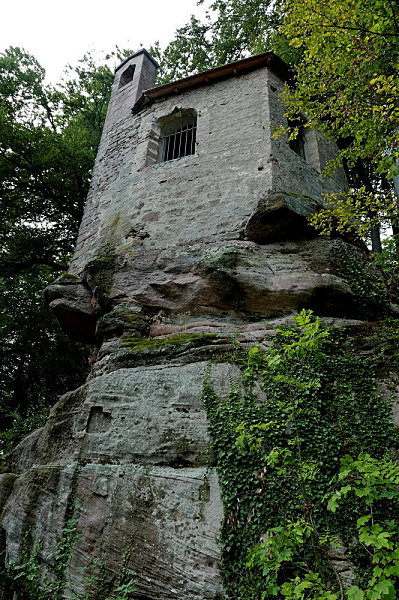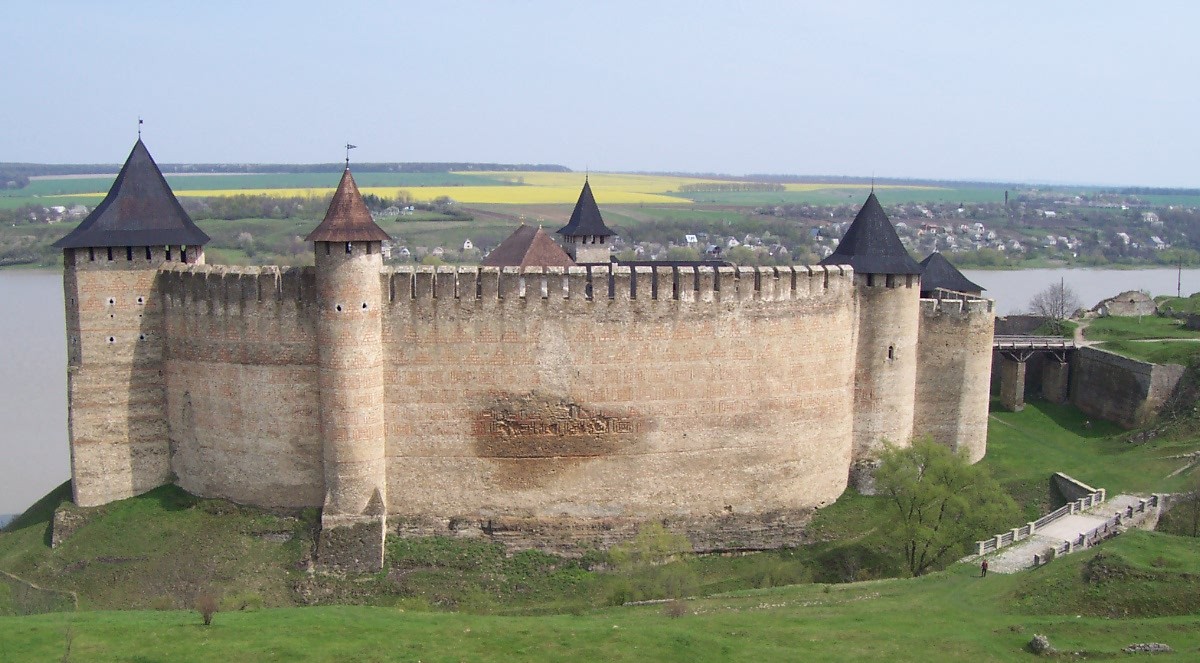|
Château De Bruyères
The château de Bruyères is a ruined castle located in the town of Bruyères, in the Vosges (department), Vosges department of eastern France. History The castle was built during the 10th century by the List of rulers of Lorraine, Duke of Lorraine, on a small hill. According to the local history, the site has been fortified in the 6th century by a son of Clodio, King of the Franks. Around 1178, Frederick I, Duke of Lorraine took over the castle and several domains and returned it to his elder brother, Simon II, Duke of Lorraine after the Treaty of Ribemont (1179).- It is said that Emperor Henry VI, Holy Roman Emperor, Henri VI stayed there for hunting, in 1196. The castle was destroyed by fire in 1715. Description The castle had a rectangular shape; in the centre, the keep was protected by two ''enceintes''. One of the two entrances was fortified by a large tower, named ''la Cabée''. The chapel, dedicated to Saint Blaise, is the last building still standing, in the east o ... [...More Info...] [...Related Items...] OR: [Wikipedia] [Google] [Baidu] |
Treaty Of Ribemont (1179)
The Treaty of Ribemont was signed on 2 May 1179 by the two eldest sons of the late Duke Matthias I of Lorraine. Matthias had died in 1176, without having laid down plans for his succession, and his duchy was claimed by his eldest son, Simon, and his second son, Frederick. In 1178 civil war broke out between the brothers. Through the mediation of Count Philip of Flanders the next year, the brothers were able to reach an agreement at Ribemont to partition the duchy. Simon received the southern, French-speaking part of the duchy, and Frederick received the northern, German-speaking part plus Ormes and Gerbéviller. Frederick also pledged himself to be his brother's vassal, but he employed the title "Duke of Bitche", an expression of equal status. In 1206 Simon abdicated and the duchy was reunited in the hands of his brother, as per the treaty of 1179. Notes Sources * * 1179 1179 in Europe 12th century in Europe Ribemont Ribemont () is a commune in the Aisne department ... [...More Info...] [...Related Items...] OR: [Wikipedia] [Google] [Baidu] |
List Of Castles In France
This is a list of castles in France, arranged by Regions of France, region and Departments of France, department. ;Notes: # The French word ''château'' has a wider meaning than the English ''castle'': it includes architectural entities that are properly called palaces, mansions or vineyards in English. This list focuses primarily on architectural entities that may be properly termed ''castle'' or ''fortress'' (), and excludes entities not built around a substantial older castle that is still evident. # Occasionally, where there is not a specific article on a castle, links are given to another article that includes details, typically an article on a town. # ''Italics'' indicate links to articles in the :fr:Main Page, French Wikipedia. # If no article appears in either English or French Wikipedias, a link is given to an external website. # The number in parentheses after the name of each department indicates the department number used for administrative purposes. # The number of cast ... [...More Info...] [...Related Items...] OR: [Wikipedia] [Google] [Baidu] |
Saint Blaise
Blaise of Sebaste (, ''Hágios Blásios''; martyred 316 AD) was a physician and bishop of Sivas, Sebastea in historical Lesser Armenia (modern Sivas, Turkey) who is venerated as a Christian saint and martyr. He is counted as one of the Fourteen Holy Helpers. Blaise is a saint in the Catholic Church, Catholic, Western Rite Orthodoxy, Eastern Orthodox Churches, Eastern Orthodox and Oriental Orthodox Churches and is the patron saint of wool combers and of sufferers from Otorhinolaryngology, ENT illnesses. In the Latin Church, his feast falls on 3 February. In the Eastern Churches, it is on 11 February. According to the ''Acta Sanctorum'', he was martyred by being beaten, combing (torture), tortured with iron combs, and beheaded. Early records The first reference to Blaise is the medical writings of Aëtius Amidenus () where his aid is invoked in treating patients with objects stuck in the throat. Marco Polo reported on the place where "Messer Saint Blaise obtained the glorious cr ... [...More Info...] [...Related Items...] OR: [Wikipedia] [Google] [Baidu] |
Enceinte
Enceinte (from Latin ''incinctus'' "girdled, surrounded") is a French term that refers to the "main defensive enclosure of a fortification". For a castle, this is the main defensive line of wall towers and curtain walls enclosing the position. For a settlement, it would refer to the main town wall with its associated gatehouses, towers, and walls. According to the 1911 ''Encyclopædia Britannica'', the term was strictly applied to the continuous line of bastions and curtain walls forming "the body of the place", this last expression being often used as synonymous with ''enceinte''. However, the outworks or defensive wall close to the enceinte were not considered as forming part of it. In early 20th-century fortification, the enceinte was usually simply the ''innermost'' continuous line of fortifications. In architecture, generally, an enceinte is the close or precinct of a cathedral, abbey, castle, etc. This definition of the term differs from the more common use of ''en ... [...More Info...] [...Related Items...] OR: [Wikipedia] [Google] [Baidu] |
Keep
A keep is a type of fortified tower built within castles during the Middle Ages by European nobility. Scholars have debated the scope of the word ''keep'', but usually consider it to refer to large towers in castles that were fortified residences, used as a refuge of last resort should the rest of the castle fall to an adversary. The first keeps were made of timber and formed a key part of the motte-and-bailey castles that emerged in Normandy and Anjou during the 10th century; the design spread to England, Portugal, south Italy and Sicily. As a result of the Norman Conquest of England in 1066, use spread into Wales during the second half of the 11th century and into Ireland in the 1170s. The Anglo-Normans and French rulers began to build stone keeps during the 10th and 11th centuries, including Norman keeps, with a square or rectangular design, and circular shell keeps. Stone keeps carried considerable political as well as military importance and could take a decade or more t ... [...More Info...] [...Related Items...] OR: [Wikipedia] [Google] [Baidu] |
Henry VI, Holy Roman Emperor
Henry VI (German language, German: ''Heinrich VI.''; November 1165 – 28 September 1197), a member of the Hohenstaufen dynasty, was King of Germany (King of the Romans) from 1169 and Holy Roman Emperor from 1191 until his death. From 1194 he was also King of Sicily as the husband and co-ruler of Queen Constance I. Henry was the second son of Emperor Frederick Barbarossa and Beatrice I, Countess of Burgundy. Well educated in the Latin language, as well as Roman law, Roman and canon law, Henry was also a patron of poets and a skilled poet himself. In 1186 he married Constance of Sicily. Henry, stuck in the Hohenstaufen conflict with the House of Welf until 1194, had to enforce the inheritance claims by his wife against her nephew Count Tancred of Lecce. Henry's attempt to conquer the Kingdom of Sicily failed at the Siege of Naples (1191), siege of Naples in 1191 due to an epidemic, with Empress Constance captured. Based on an enormous ransom for the release and submission of King R ... [...More Info...] [...Related Items...] OR: [Wikipedia] [Google] [Baidu] |
Simon II, Duke Of Lorraine
Simon II (1140 – 4 January 1207) was the Duke of Lorraine from 1176 to 1205. He was the son and successor of Matthias I and Bertha (also called Judith), daughter of Frederick II, Duke of Swabia. His mother wished for her second son, Frederick, to succeed and so Simon was forced to convene an assembly of the nobles to confirm his succession. He was in turn forced to recognise certain feudal privileges and create the Estates of Lorraine, a form of parliament. He also gave Bitche as an appanage to Frederick who was not satisfied and revolted against Simon. The war lasted three years until the Treaty of Ribemont, whereby Simon retained the southern, francophone, half of the duchy and Frederick took the northern, germanophone, portion. He married Ida (died 1227), daughter of Gerard I, count of Mâcon and Vienne, and Maurette of Salins. They had no children. He designated his nephew, Frederick, son of Frederick, as his successor and ceded, in 1202, the suzerainty over the county o ... [...More Info...] [...Related Items...] OR: [Wikipedia] [Google] [Baidu] |
Bruyères
Bruyères () is a commune in the Vosges department in Grand Est in northeastern France. The town built up around a castle built on a hill in the locality in the 6th century. It was the birthplace of Jean Lurçat, in 1892. History In World War II, Bruyères was liberated from German occupation by Japanese-American soldiers of the 442nd Regimental Combat Team. The 100th/442nd Regiment became the most decorated Unit in the History of the US Army (8 Presidential Unit Citation, 21 Medal of Honor and 18,143 individual decorations). On 8 and 9 July 1989 the bicentennial of the presentation of the "Bill of Human Rights" by Mounier, Pierre Moulin created and inaugurated the "Peace and Freedom Trail." Encompassing 89 points of interest, the "Peace and Freedom Trail" highlights the actions of the 442nd RCT and their campaign to free Bruyères from German occupation during World War II. * Arboretum du col du Haut-Jacques Population Notable residents * Gaston About Twin towns * V ... [...More Info...] [...Related Items...] OR: [Wikipedia] [Google] [Baidu] |
Frederick I, Duke Of Lorraine
Frederick I ( or ) (c. 1143 – 7 April 1206) was the duke of Lorraine from 1205 to his death. He was the second son of Matthias I and Bertha (also called Judith), daughter of Frederick II, Duke of Swabia. He succeeded his brother, Simon II, who had already given him the county of Bitche in 1176 and had recognised him over the northern, germanophone half of Lorraine by the Treaty of Ribemont of 1179. Judith had wanted him to succeed to all their father's inheritance, but a three-year civil war only secured him Bitche and a half-portion. Simon retired to a monastery in 1205, recognising Frederick's son Frederick as heir. Frederick inherited it all nevertheless, but died a year later and it went to his son by Wierzchoslawa Ludmilla (1150–1223), daughter of Mieszko III the Old, duke of Greater Poland and high duke of all Poland. Their children were: *Frederick, his successor in Lorraine *Thierry the Devil (''le Diable''), lord of Autigny, married Gertrude de Montmorency, ... [...More Info...] [...Related Items...] OR: [Wikipedia] [Google] [Baidu] |
Franks
file:Frankish arms.JPG, Aristocratic Frankish burial items from the Merovingian dynasty The Franks ( or ; ; ) were originally a group of Germanic peoples who lived near the Rhine river, Rhine-river military border of Germania Inferior, which was the most northerly province of the Roman Empire in continental Europe. These Frankish tribes lived for centuries under varying degrees of Roman hegemony and influence, but after the collapse of Roman institutions in western Europe they took control of a large empire including areas which had been ruled by Rome, and what it meant to be a Frank began to evolve. Once they were deeply established in Gaul, the Franks became a multilingual, Catholic Christian people, who subsequently came to rule over several other post-Roman kingdoms both inside and outside the old empire. In a broader sense much of the population of western Europe could eventually described as Franks in some contexts. The term "Frank" itself first appeared in the third cent ... [...More Info...] [...Related Items...] OR: [Wikipedia] [Google] [Baidu] |






